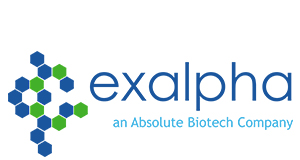Rabbit anti Human CXCR4 (NT) (HIV and chemokine receptor)
Rabbit anti Human CXCR4 (NT) (HIV and chemokine receptor), Polyclonal, IgG
SKU
EXAX1149P
Packaging Unit
100 µg
Manufacturer
Exalpha Biologicals Inc
Availability:
loading...
Price is loading...
Background: Human immunodeficiency virus (HIV) and related viruses require coreceptors, in addition to CD4, to infect target cells. Some G protein-coupled receptors including CCR5, CXCR4, CCR3, CCR2b and CCR8 in the chemokine receptor family, and four new human molecules GPR15, STRL33, GPR1 and V28 were recently identified as HIV coreceptors 1. Among them, CXCR4 (fusin, LESTR or HUMSTR) is a principal coreceptor for T-cell tropic strains of HIV-1 fusion and entry of human white blood cells2,3. CXCR4 is also required for the infection by dual-tropic strains of HIV-1 and mediates CD-4 independent infection by HIV-24,5. The -chemokine SDF-1 is the ligand for CXCR4 and prevents infection by T-tropic HIV-16,7. CXCR4 associates with the surface CD4-gp120 complex before HIV enters target cells8. CXCR4 messenger RNA levels correlated with HIV-1 permissiveness in diverse human cell types2. Antibodies to CXCR4 block HIV-1 and HIV-2 fusion and infection of human target cells2,5,10. The amino-terminal domain and the second extracellular loop of CXCR4 serve as HIV biding sites10,11.
Positive Control: HeLa cell lysate.
Immunogen: Synthetic peptide corresponding to amino acids 1 to 14 of the N terminal of the human CXCR4 receptor.
Purification Method: Antigen Immunoaffiinity Purification.
Formulation: Provided in phosphate buffered saline solution containing 0.02% sodium azide as a preservative.
References: 1. Dimitrov, D.S. How do viruses enter cells? The HIV coreceptors teach us a lesson of complexity. Cell 1997, 91, 721-730
2. Feng, Y., et al. HIV-1 entry cofactor: functional cDNA cloning of a seven-transmembrane, G protein-coupled receptor. Science 1996, 272, 872-877
3. Berson, J.F., et al. A seven-transmembrane domain receptor involved in fusion and entry of T-cell-tropic human immunodeficiency virus type 1 strains. J. Virol. 1996, 70, 6288-6295
4. Doranz, B.J., et al. A dual-tropic primary HIV-1 isolate that uses fusin and the beta-chemokine receptors CKR-5, CKR-3, and CKR-2b as fusion cofactors. Cell 1996, 85, 1149-1158
5. Endres, M.J., et al. CD4-independent infection by HIV-2 is mediated by fusin/CXCR4. Cell 1996, 87, 745-756
6. Bleul, C.C., et al. The lymphocyte chemoattractant SDF-1 is a ligand for LESTR/fusin and blocks HIV-1 entry. Nature 1996, 382, 829-833
7. Oberlin, E., et al. The CXC chemokine SDF-1 is the ligand for LESTR/fusin and prevents infection by T-cell-line-adapted HIV-1. Nature 1996, 382, 833-835
8. Lapham, C.K., et al. Evidence for cell-surface association between fusin and the CD4-gp120 complex in human cell lines. Science 1996, 274, 602-605
9. Leoetscher, M., et al. Cloning of a human seven-transmembrane domain receptor, LESTR, that is highly expressed in leukocytes. J. Biol. Chem. 1994, 269, 232-237
10. Brelot, A., et al. Role of the first and third extracellular domains of CXCR-4 in human immunodeficiency virus coreceptor activity. J. Virol. 1997, 71, 4744-4751
11. Lu, Z., et al. Evolution of HIV-1 coreceptor usage through interactions with distinct CCR5 and CXCR4 domains. Proc. Natl. Acad. Sci. USA 1997, 94, 6426-6431.
UniProt: P61073.
Caution: This product is intended FOR RESEARCH USE ONLY, and FOR TESTS IN VITRO, not for use in diagnostic or therapeutic procedures involving humans or animals.
Positive Control: HeLa cell lysate.
Immunogen: Synthetic peptide corresponding to amino acids 1 to 14 of the N terminal of the human CXCR4 receptor.
Purification Method: Antigen Immunoaffiinity Purification.
Formulation: Provided in phosphate buffered saline solution containing 0.02% sodium azide as a preservative.
References: 1. Dimitrov, D.S. How do viruses enter cells? The HIV coreceptors teach us a lesson of complexity. Cell 1997, 91, 721-730
2. Feng, Y., et al. HIV-1 entry cofactor: functional cDNA cloning of a seven-transmembrane, G protein-coupled receptor. Science 1996, 272, 872-877
3. Berson, J.F., et al. A seven-transmembrane domain receptor involved in fusion and entry of T-cell-tropic human immunodeficiency virus type 1 strains. J. Virol. 1996, 70, 6288-6295
4. Doranz, B.J., et al. A dual-tropic primary HIV-1 isolate that uses fusin and the beta-chemokine receptors CKR-5, CKR-3, and CKR-2b as fusion cofactors. Cell 1996, 85, 1149-1158
5. Endres, M.J., et al. CD4-independent infection by HIV-2 is mediated by fusin/CXCR4. Cell 1996, 87, 745-756
6. Bleul, C.C., et al. The lymphocyte chemoattractant SDF-1 is a ligand for LESTR/fusin and blocks HIV-1 entry. Nature 1996, 382, 829-833
7. Oberlin, E., et al. The CXC chemokine SDF-1 is the ligand for LESTR/fusin and prevents infection by T-cell-line-adapted HIV-1. Nature 1996, 382, 833-835
8. Lapham, C.K., et al. Evidence for cell-surface association between fusin and the CD4-gp120 complex in human cell lines. Science 1996, 274, 602-605
9. Leoetscher, M., et al. Cloning of a human seven-transmembrane domain receptor, LESTR, that is highly expressed in leukocytes. J. Biol. Chem. 1994, 269, 232-237
10. Brelot, A., et al. Role of the first and third extracellular domains of CXCR-4 in human immunodeficiency virus coreceptor activity. J. Virol. 1997, 71, 4744-4751
11. Lu, Z., et al. Evolution of HIV-1 coreceptor usage through interactions with distinct CCR5 and CXCR4 domains. Proc. Natl. Acad. Sci. USA 1997, 94, 6426-6431.
UniProt: P61073.
Caution: This product is intended FOR RESEARCH USE ONLY, and FOR TESTS IN VITRO, not for use in diagnostic or therapeutic procedures involving humans or animals.
| SKU | EXAX1149P |
|---|---|
| Manufacturer | Exalpha Biologicals Inc |
| Manufacturer SKU | X1149P |
| Green Labware | No |
| Package Unit | 100 µg |
| Quantity Unit | STK |
| Reactivity | Human, Mouse (Murine) |
| Clonality | Polyclonal |
| Application | Immunoprecipitation, Western Blotting, Immunocytochemistry |
| Isotype | IgG |
| Host | Rabbit |
| Product information (PDF) | Download |
| MSDS (PDF) | Download |

 Deutsch
Deutsch






